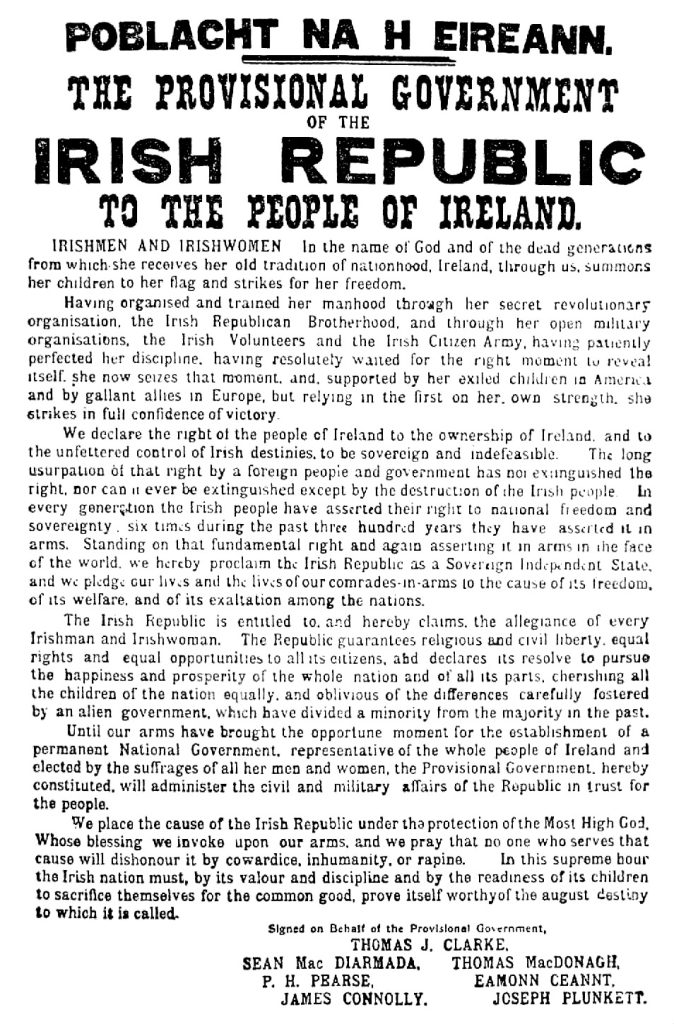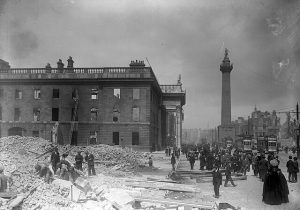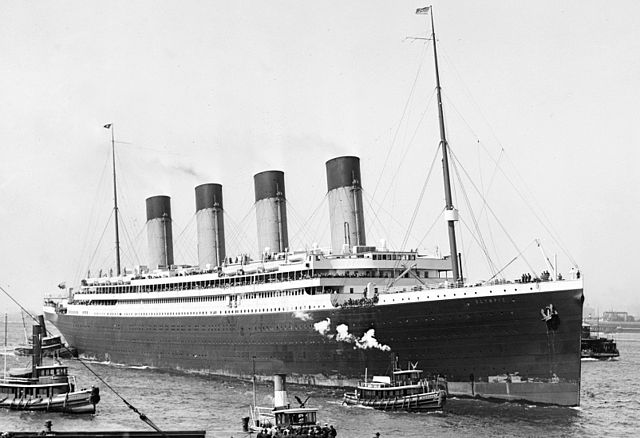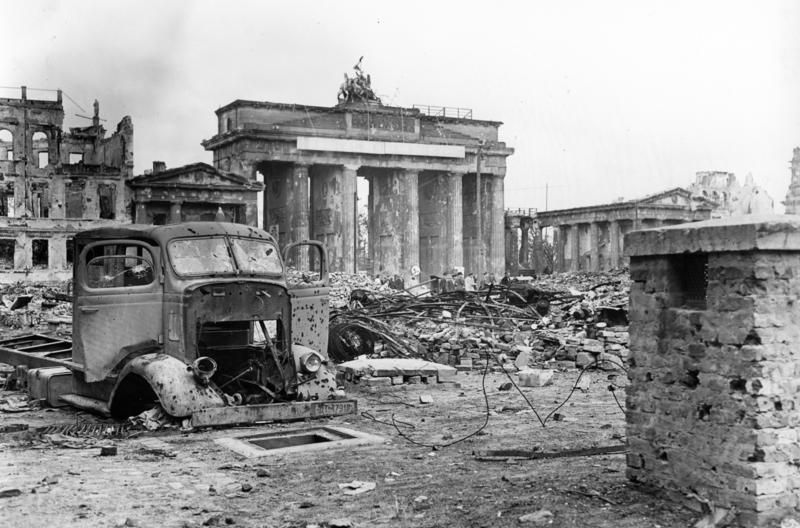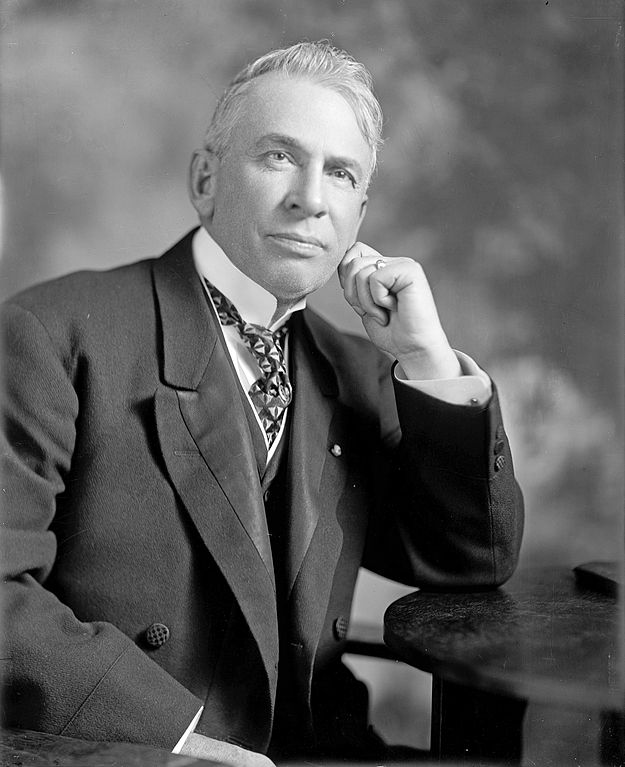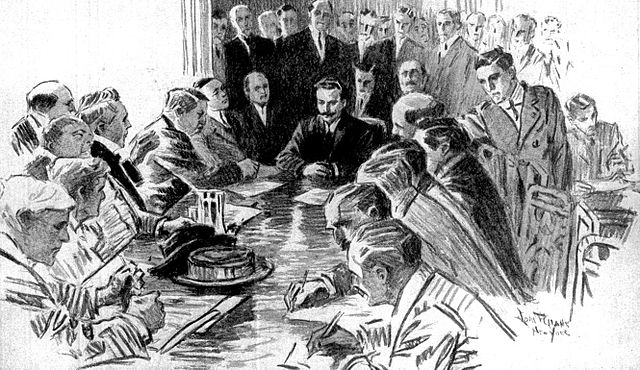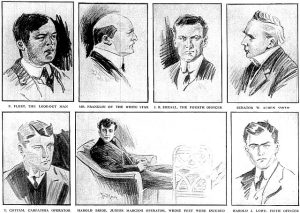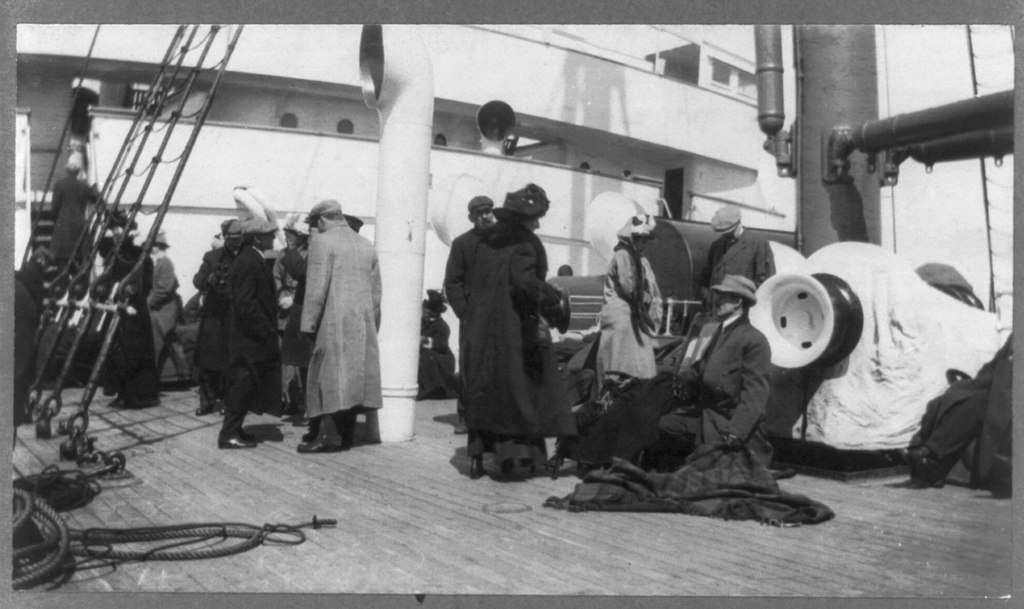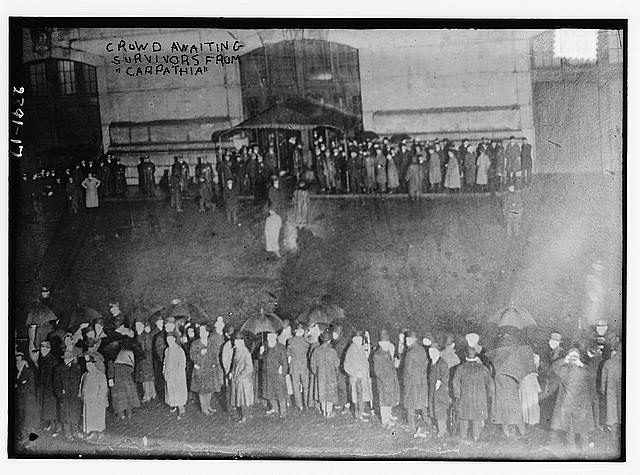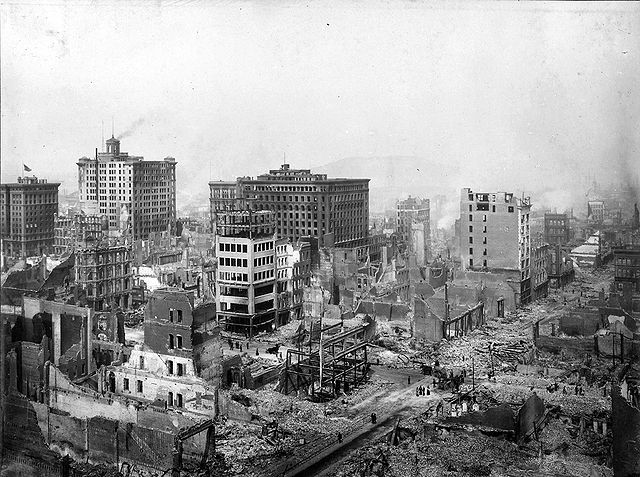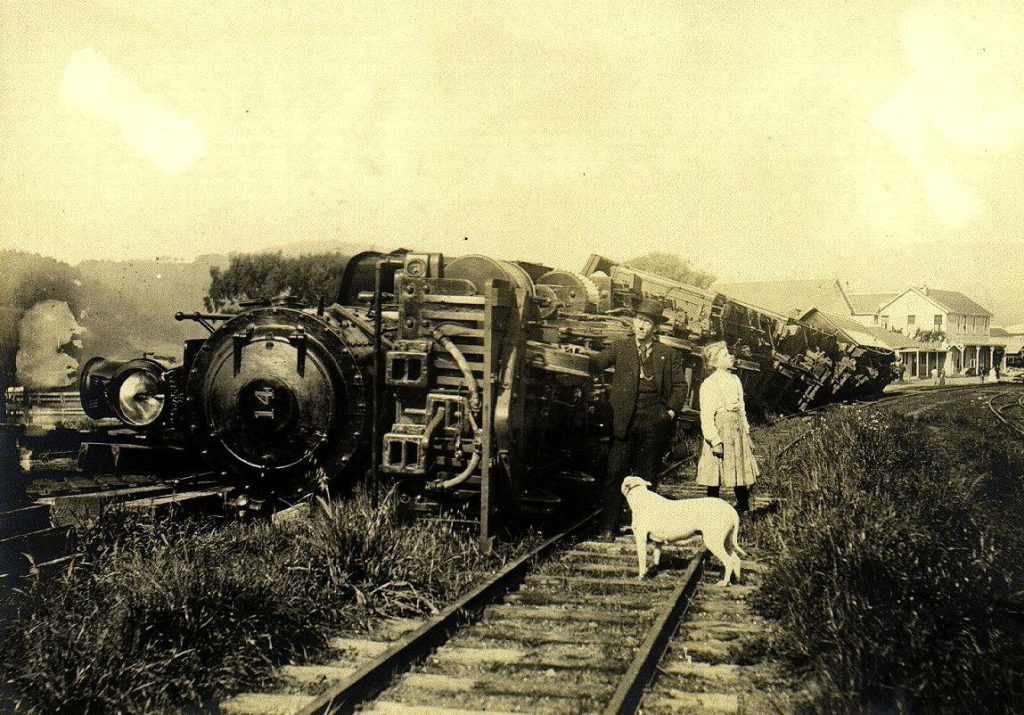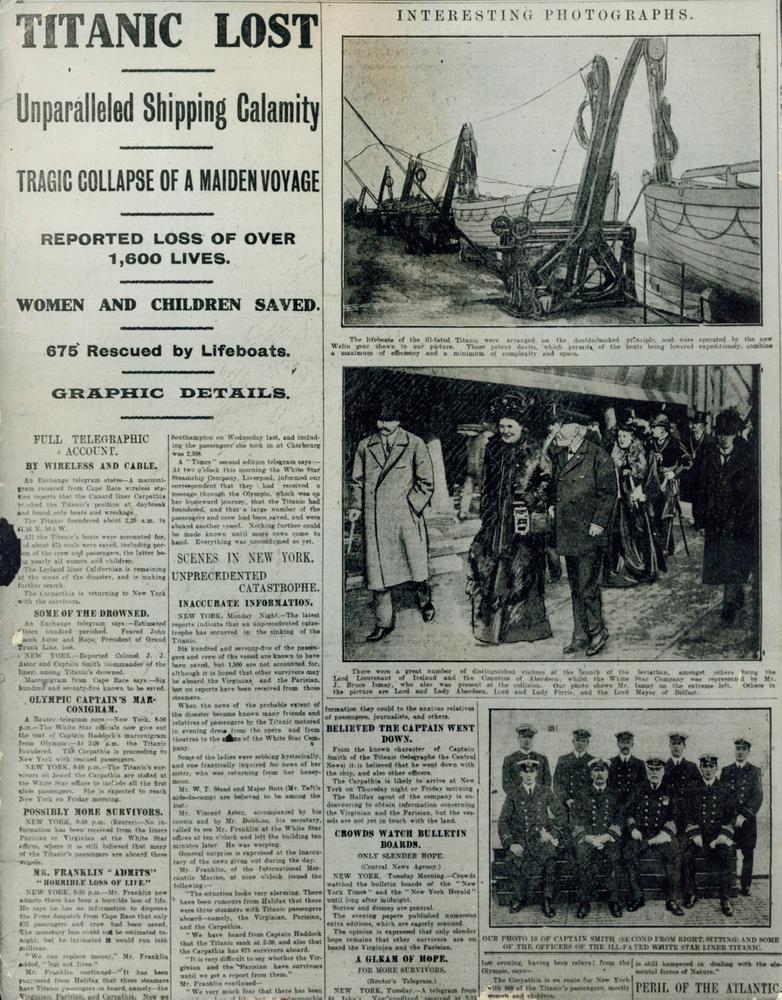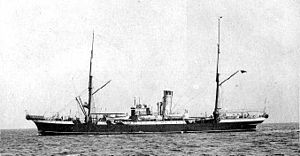[This is a curated list of news stories. If you see a news story we should cover here, send email to editor@titanicnewschannel.com]
“The Titanic’s Other Casualties | Holy Cow! History.” Lompoc Record, 20 Apr. 2024, lompocrecord.com/opinion/columnists/the-titanic-s-other-casualties-holy-cow-history/article_139171a2-904a-5670-9d43-73dfbf00d555.html.
Let’s start with what we know for sure. At least three dogs escaped in lifeboats: two Pomeranians and one Pekingese show champion, Sun Yat Sen. Their escape was a big deal because, with so many passengers and so little space in the lifeboats, crew members refused to let animals go with their owners. It’s believed all three owners spared their beloved pooches by smuggling them inside their cabins because they were so small, later hiding them inside thick winter coats as they fled the ship.
=
“‘Rare’ Footage of Titanic Shipwreck Released for First Time: See Into Chief Officer’s Cabin and More.” Yahoo.com, People, 16 Apr. 2024, ca.news.yahoo.com/rare-footage-titanic-shipwreck-released-184318760.html.
The Woods Hole Oceanographic Institution (WHOI) has just released never-before-seen video of the wreck on YouTube to celebrate the 25th anniversary of James Cameron’s 1997 film Titanic. The “rare, uncut footage” includes nearly 90 minutes of images from the July 1986 voyage that, according to Today, helped inspire the award-winning movie.
=
Grover, Jamie. “Remembering the Somerset Passengers on Board the Titanic.” Somerset County Gazette, 21 Apr. 2024, www.somersetcountygazette.co.uk/news/24258613.remembering-somerset-passengers-board-titanic.
Among those on board was 26-year-old Marion Wright, from Yeovil, who survived the disaster. She eventually arrived in New York and was reunited with her fiancé. Marion said: “I don’t think I shall ever want to cross the ocean again just yet. It has been sad losing all I had, wedding presents and everything I had worked so hard at, but they’re nothing in comparison to all the lives lost.” The couple married and successfully ran a farm in Oregon.
=
D’Arcy, Sharon Dolan, and Sharon Dolan D’Arcy. “West Clare Connection to Famous Titanic Bugler.” The Clare Champion, 18 Apr. 2024, clarechampion.ie/west-clare-connection-to-famous-titanic-bugler.
The young 25-year-old man tragically died when the ocean liner struck an iceberg and sank on its maiden voyage from Southampton to New York in 1912. A mere three months previously, he had married a Kilrush woman called Mary Meaney at St Gregory’s Catholic Church in Wandsworth. Local historian and county Tyrone native, Geoff Simmons had put out an appeal in March via local Clare media and social media for descendants of Mary Meaney’s to attend the unveiling of an historic blue plaque in Percy’s honour at his former home at 26, Lessingham Avenue on April 14, the eve of the anniversary of the ship’s sinking. Mr Simmons had hoped The Cliffs of Doneen would be sung on the day in recognition of Mary and the Clare connection.
=
Alam, Zoheb. “Titanic Survivor Revealed He Continued to Have Nightmares About the Tragedy for Over 65 Years.” https://www.good.is, 20 Apr. 2024, www.good.is/titanic-survivor-revealed-he-continued-to-have-nightmares-about-the-tragedy-for-over-65-years.
One of the survivors, Frank Prentice, shared his experience and recalled how he survived the sinking ship but continued to have nightmares about it. His interview was recorded by BBC in 1979 for their documentary series “The Great Liners” and has been shared on YouTube. Since the tragedy, he had held on to a keepsake that was a vivid reminder of the tragedy. It was the watch he wore that night that remained frozen in time and had stopped at exactly 02:20 AM after lasting for a couple of minutes in the freezing water. During the BBC interview, he was asked whether talking about the Titanic bothered him and he replied, “I shall probably dream about it tonight; have another nightmare.”
You can view his BBC interview on YouTube by clicking here.
=
“The Titanic Disaster Was Predicted in an 1898 Novel With ‘eerie’ Foretelling.” Irish Star, 19 Apr. 2024, www.irishstar.com/news/us-news/titanic-disaster-predicted-1898-novel-32628706.
A novel released in 1898 eerily foretold the sinking of the Titanic, with multiple parallels between a fictitious sinking in the book and the infamous Titanic disaster. “The Wreck of the Titan Or, Futility” was authored by the American writer, Morgan Robertson. In his book, the Titan sank off Newfoundland Banks, around 1,000 miles off the coast of New York. Coincidentally, it had hit an iceberg and, in a similar fashion to the Titanic, and the accident occurred in mid-April on an otherwise calm night at sea.
Editor’s note: As the article notes, there are some striking similarities to the actual tragedy of 1912. There are some crucial differences though. Unlike what happened to Titanic, the fictional Titan was not in calm seas. In fact, according to the story, it was a hard choppy sea and fog as well that made it hard to sea. Like Titanic, the lookouts could not see the iceberg until too late. However, it hits the berg directly and this is what Robertson wrote of the collision:
“But in five seconds the bow of Titan began to lift, and ahead, and on either hand, could be seen, a field of ice which arose in an incline to a hundred feet high in her track. But a low beach, possibly formed by the recent overturning of the berg, received the Titan, and with her keel cutting the ice like steel runner of an iceboat, and great weight resting on the starboard bilge, she rose out of the sea, higher and higher-until the propellers in the stern were half exposed-then meeting an easy spiral rise in the ice under her port bow, she heeled, overbalanced, and crashed down on her side to starboard.”
That is quite a scene if you picture it in your head! Robertson, like many authors, latched on to a great kernel of a story when he speculated on huge ships like his fictional Titan hitting an iceberg. Other great authors have done the same as well. It should be noted another Robertson story foretold of a Japanese attack on the United States as well. There was a greater loss of life in his story as they only had 24 lifeboats (the bare minimum) lashed to the upper deck (and hard to use since the ship was inclined) but to minimize other safety costs put cork jackets in passenger and crew cabin.
=
Cummings, Denis. “A Look at the Titanic Second Class Survivors.” www.findingdulcinea.com, 19 Apr. 2024, www.findingdulcinea.com/titanic-second-class-survivors.
As a fervent admirer of history with a penchant for uncovering forgotten tales, the stories of resilience and survival especially captivate me. Among such narratives, the epic tale of the Titanic stands out not just for its unfortunate demise but for the human spirits that persevered. In this article, I’m thrilled to shine a light on those extraordinary individuals – the Titanic second class passengers who managed to survive this monumental tragedy.
=
Felton, James. “Iceberg That Sank the Titanic May Be Shown in Unearthed Photo From 1912.” IFLScience, 18 Apr. 2024, www.iflscience.com/iceberg-that-sank-the-titanic-may-be-shown-in-unearthed-photo-from-1912-73865.
A rediscovered photo captured two days after the Titanic sank is going on auction this month. The photo, taken by undertaker John Snow Jr, may show the iceberg that sank the ship on its maiden voyage 112 years ago on April 14. When the Titanic sank 640 kilometers (400 miles) off Newfoundland, Canada, over 1,500 of the passengers, of which there were over 2,200, died – many by drowning or immersion hypothermia. John Snow Jr was chief embalmer of funeral directors John Snow & Co and was summoned to the wreck of the Titanic to help collect some, but not all, of the bodies for burial.
=
“Titanic Secrets Revealed: Number of Lifeboats Reduced to Give First Class Passengers a Better View.” Sarajevo Times, 17 Apr. 2024, sarajevotimes.com/titanic-secrets-revealed-number-of-lifeboats-reduced-to-give-first-class-passengers-a-better-view.
His video showcases all 10 of Titanic’s decks, including the boat deck at the very top. Part of the reason for the lack of lifeboats was also because designers didn’t want to overcrowd the ship’s deck and obstruct the view of the Atlantic for first-class passengers. Another interesting fact is that Titanic actually had two grand staircases, both restricted to first-class passengers only. The far larger and grander one was the front grand staircase, adorned with a wall panel of carved oak with a clock in the center, also the setting where Jack and Rose meet in James Cameron’s 1997 film hit.
=
“How Many First Class Passengers Died on the Titanic?” www.findingdulcinea.com, 18 Apr. 2024, www.findingdulcinea.com/first-class-passengers-died-on-the-titanic.
Are you curious about the tragic fate of the Titanic’s elite? My passion for history has always drawn me towards unraveling stories from the past, and today, I’m here to share with you a piece of history that still captures our imagination over a century later.We often hear about the Titanic’s ill-fated voyage, but who exactly were those first-class passengers who lost their lives in one of history’s most infamous maritime disasters? Let’s explore together and uncover how many first class passengers died on the Titanic.
=
Mawson, Brandon. “A Look at Two Cumbrians Who Lost Their Lives on the Titanic.” News and Star, 18 Apr. 2024, www.newsandstar.co.uk/features/24257172.look-two-cumbrians-lost-lives-titanic.
Two men in particular, Jonathon Shepherd and his mentor Joseph Bell, were some of the Cumbrians who lost their lives on the ship. Jonathon was born in Whitehaven in 1880 and Joseph was originally from Farlam, near Brampton.
=
Fraga, Kaleena. “Edward John Smith, the Captain of the RMS Titanic.” All That’s Interesting, 18 Apr. 2024, allthatsinteresting.com/titanic-captain-edward-smith.
On the Olympic, Smith was involved in the worst catastrophe of his career (until he became captain of the Titanic). In September 1911, the Olympic collided with the HMS Hawke off the Isle of Wight. Though Smith was reportedly not directing the ship at the time, the Royal Navy protested that the Olympic had caused the collision by taking an abrupt turn. White Star Line vehemently disagreed but ended up having to pay high legal fees.
=
Jonathan. “Titanic: Fact Vs. Fiction – Debunking Common Myths About the Disaster.” Anglotopia, 17 Apr. 2024, anglotopia.net/british-history/titanic/titanic-fact-vs-fiction-debunking-common-myths-about-the-disaster.
The sinking of the RMS Titanic has captured the imagination of people worldwide for over a century, spawning countless myths and misconceptions about the events that transpired on that fateful night in April 1912. While the Titanic disaster remains one of the most well-documented maritime tragedies in history, numerous myths and inaccuracies have persisted over the years. Here, we debunk ten common myths surrounding the Titanic and separate fact from fiction.
=
O’Rourke, Connor. “Extraordinary Story of Titanic’s Second Officer Charles Herbert Lightroller.” IrishCentral.com, 17 Apr. 2024, www.irishcentral.com/roots/history/titanic-charles-herbert-lightoller.
In the following years, he joined the Royal Navy and helped with the naval efforts during WWI and eventually became a full commander at the end of 1918. Remarkably, even in his old age, he had commanded one of many civilian ships in 1940 that helped rescue over 338,000 men from the beaches of Dunkirk during the Second World War.
=
Ratliff, Melissa. “WATCH: How Was the Sinking of the RMS Titanic Reported Locally?” https://www.mysuncoast.com, 16 Apr. 2024, www.mysuncoast.com/2024/04/16/watch-how-was-sinking-rms-titanic-reported-locally.
It took days for information to be distributed to sources and some of the information that got out was completely incorrect. By the time the news began trickling down to major newspapers in Florida, there were different accounts of everything. On April 15, 1912, the evening edition of the Tampa Daily Times reported that the ship was afloat and all passengers had been rescued. This was eventually retracted and corrected in subsequent editions.
=
Knudsen, Cory. “So Minnesota: Deephaven Couple Were Passengers on Titanic.” KSTP.com 5 Eyewitness News, 16 Apr. 2024, kstp.com/kstp-news/top-news/so-minnesota-deephaven-couple-were-passengers-on-titanic.
Monday marks the 112th anniversary of the sinking of the Titanic on April 15, 1912. Walter Douglas and his wife Mahala from Minnesota were passengers on the ship. The Douglas family’s wealth came from starting the Quaker Oats Company and Douglas Starch Company. “His peers dubbed him a captain of industry,” said Liz Vandam with the Lake Minnetonka Historical Society. “They considered him to be a man of great integrity.” By the beginning of 1912, Walter Douglas retired and construction of the family’s palatial mansion in Deephaven overlooking Lake Minnetonka was complete.
=
Burgess, Madison, and Jonathan Chadwick. “Inside the Remaining Mysteries Surrounding the Titanic – From What Happened to the Passengers To…” Mail Online, 15 Apr. 2024, www.dailymail.co.uk/news/article-13309119/remaining-mysteries-titanic-happened-passengers-iceberg-caused-tragedy.html.
One theory suggests that a freak weather event created the phenomenon, which possibly both obscured the iceberg until it was too late and hindered communication with a nearby ship. Historian and broadcaster Tim Maltin claims the Titanic’s crew fell victim to a thermal inversion, which is caused by a band of cold air forcing itself underneath a band of warmer air, the Times reports. He believes that the cold current in the North Atlantic Ocean called Labrador pushed this cold air beneath the warm Gulf Stream, creating a mirage.
=
Chadwick, Jonathan. “See Inside the Titanic Like NEVER Before: Incredible Video Reveals a Cross Section of the Doomed…” Mail Online, 14 Apr. 2024, www.dailymail.co.uk/sciencetech/article-13288299/Titanic-Incredible-video-cross-section-doomed-liner.html.
But the scale and the glory of RMS Titanic can be admired once more, thanks to a detailed digital cross section of the stunning luxury liner. Posted to YouTube by US animator Jared Owen, it shows Titanic from every angle, exactly as it appeared just before it set sail from Southampton 112 years ago. The video may prove helpful to Australian billionaire Clive Palmer, who has promised to recreate the famous ship at an estimated cost of £1 billion. ‘Titanic II’, to be ready by 2027, will closely mimic the original ship’s specifications, while including modern 21st navigation and safety systems.
You can view the video on YouTube by clicking here.
=
Winston, Alex. “The Lives of Jews Who Boarded the Titanic.” The Jerusalem Post | JPost.com, 14 Apr. 2024, www.jpost.com/diaspora/article-796496.
Some 69 of the passengers on board the Titanic were known to be Jewish, and their stories and experiences are some of the most interesting and heart-wrenching of the whole saga.
=
Watch “‘Titanic: The Official Cookbook’ Author Demonstrates ‘Blue Moon’ Cocktail.” ABC7 Chicago, 11 Apr. 2024, abc7chicago.com/titanic-the-official-cookbook-veronica-hinke-recipes-recipe/14646456.
There were several events happening around the Chicagoland area to commemorate that day. Author Veronica Hinke, author of “Titanic: The Official Cookbook” stopped by ABC 7 Eyewitness news to talk about her book and demonstrate one of the 40 timeless recipes for every occasion.
=
Jones, Alec. “Five Ways ‘Titanic: The Artefact Exhibition’ Makes You Feel Like You’re Actually on the Ship.” Concrete Playground, 11 Apr. 2024, concreteplayground.com/melbourne/arts-entertainment/five-ways-the-titanic-the-artefact-exhibition-makes-you-feel-like-on-the-ship.
A more engaging way to learn this tragic story is to Titanic: The Artefact Exhibition, an incredibly detailed exhibition that studies the vessel, its crew, the passengers and takes visitors through a memorable journey through the events of that fateful night. But how does it do that and why is it worth your time? Let’s set sail to find out.
=
Bromovsky, Lettice. “Is This the Iceberg That Sank the Titanic? Newly-unearthed Photo Provides Fascinating Clue to 1912…” Mail Online, 10 Apr. 2024, www.dailymail.co.uk/news/article-13293371/Titanic-photo-fascinating-clue-1912-tragedy-killed.html.
A newly unearthed photo of the iceberg that may have sunk the Titanic has come to light 112 years after the disaster. The black and white image was captured by an undertaker working on the body recovery ship that arrived on the wreck site in the aftermath of the sinking. It is now coming up for sale at Henry Aldridge & Son Auctioneers of Devizes, Wiltshire, for an estimated price of £4,000 to £7,000. It shows a large glacier oddly shaped like an elephant above the surface of the north Atlantic.It was taken two days after the luxury liner struck an iceberg on her maiden voyage and sank killing 1,522 people.
The auction will take place on 27 April 2024 at 9:00 am UK time. Information about how to bid can be found here.
=
Small, Alonzo. “Titanic: The Exhibition at Old Orchard Extended Due to Popular Demand.” WGN9, 10 Apr. 2024, wgntv.com/news/trending/titanic-the-exhibition-at-old-orchard-extended-due-to-popular-demand.
On the 112th anniversary of the ship’s departure, Exhibition producer Imagine Exhibitions announced that, due to popular demand, they would extend the immersive experience through July 7. A Titanic-inspired afternoon tea experience has also been added, which “promises to transport visitors back in time, blending culinary delights with the rich tapestry of Titanic’s story.” Titanic Afternoon Tea begins on April 28. A new combination ticket will also be available, which grants access to both Titanic: The Exhibition and Downton Abbey: The Exhibition.
Information on dates, times, and prices can be found here.
=
Hickey, Kate. “Titanic Hero Irishman Thomas Andrews Epitomized Bravery as Ship Went Down.” IrishCentral.com, 10 Apr. 2024, www.irishcentral.com/roots/history/thomas-andrews-titanic-hero.
Andrews had been overruled on two key issues when the ship was being designed. He wanted to double the number of lifeboats to 64 and wanted a double hull built extending up to the B deck which would certainly have prevented the disaster. After he died on 15th April 1912, his father received a telegram from his mother’s cousin, who had spoken with survivors in New York, seeing news of Andrews. The telegram was read aloud by Andrews Sr. to the staff of their home in Comber: “Interview Titanic’s officers. All unanimous that Andrews heroic unto death, thinking only safety others. Extend heartfelt sympathy to all.”
=
“How New York City Grieved the Titanic – Ephemeral New York.” Ephemeral New York, ephemeralnewyork.wordpress.com/tag/how-new-york-city-grieved-the-titanic. (8 April 2024)
For the next 55 years, as ship traffic decreased in New York Harbor and South Street’s fortunes turned, the Titanic memorial with its time ball stayed in service on the roof. In 1968, the Seaman’s Institute moved to a new headquarters on State Street. The top of the Titanic Memorial was given to the South Street Seaport Museum. But it wasn’t until 1976 when the memorial lighthouse went up on a triangular corner at Pearl and Fulton Streets (now known as Titanic Memorial Park), held in place by a concrete podium. The time ball is also gone; it’s been replaced by an ornamental sphere.
=
Molony, Senan. “Faces of the Titanic: William Burke, Irish Hero Who Saved a Woman’sLife.” IrishCentral.com, 8 Apr. 2024, www.irishcentral.com/roots/history/titanic-william-burke-irish-hero.amp.
This is an extract from the book “The Irish Aboard the Titanic” by Senan Molony which tells the tales of the people who were on board the night the ship went down. This book gives those people a voice. In it are stories of agony, luck, self-sacrifice, dramatic escapes, and heroes left behind.
=
Barnes, Freya. “Leather Case for Violin Used on the Titanic to Reassure Passengers as the Ship Sank Is Set to Sell…” Mail Online, 5 Apr. 2024, www.dailymail.co.uk/news/article-13277023/leather-case-violin-titanic-sale-auction.html.
A leather case that protected the violin played by the bandmaster on the Titanic as the ship sank is tipped to sell for £120,000 at auction. Wallace Hartley and his orchestral band famously played on to reassure the passengers as the 1912 disaster unfolded around them. Wallace went down with the ship but not before he put his wooden violin back in its valise bag which he strapped to himself – possibly for buoyancy – using the long handles.
The auction will take place on 27 April 2024 at 9:00 am UK time. Information about how to bid can be found here.
=
“112-Year-Old Elaborate Menu of Titanic Is Viral, Internet Reacts.” NDTV.com, www.ndtv.com/offbeat/112-year-old-elaborate-menu-of-titanic-is-viral-internet-reacts-5374994. (4 April 2024)
A popular page on X named Fascinating has released the elaborate menu served onboard the Titanic. The page posted two slides that included pictures of the original menu cards for the first and third-class passengers of the Titanic. The original menu card exudes an enchanting aura, offering various dining options from luncheon and buffet to breakfast, catering to first and third-class passengers. The post soon went viral on X. “Third class’s menu looked good to me,” a user commented.
=
Knoxville News Sentinel. “Pigeon Forge’s Titanic Museum Attraction Buys Panel at Center of ‘Titanic’ Controversy.” Knoxville News Sentinel, 2 Apr. 2024, www.knoxnews.com/story/news/local/2024/04/02/pigeon-forge-museum-buys-panel-at-heart-of-titanic-controversy/73177923007.
Speculation will likely continue forever on whether Jack would, in fact, have fit on the “door” with Rose and survived the sinking of the Titanic. But any possible conspiracy theories over who, exactly, shelled out more than half a million dollars during a March auction for the iconic wood panel from the eponymous film can now be laid to rest. The “door” that featured prominently in the Oscar-winning blockbuster “Titanic” was purchased by Titanic Museum Attraction, which has locations in Pigeon Forge and Branson, Mo. According to the museum, it will become part of one of the largest permanent collections of Titanic artifacts anywhere.
=

